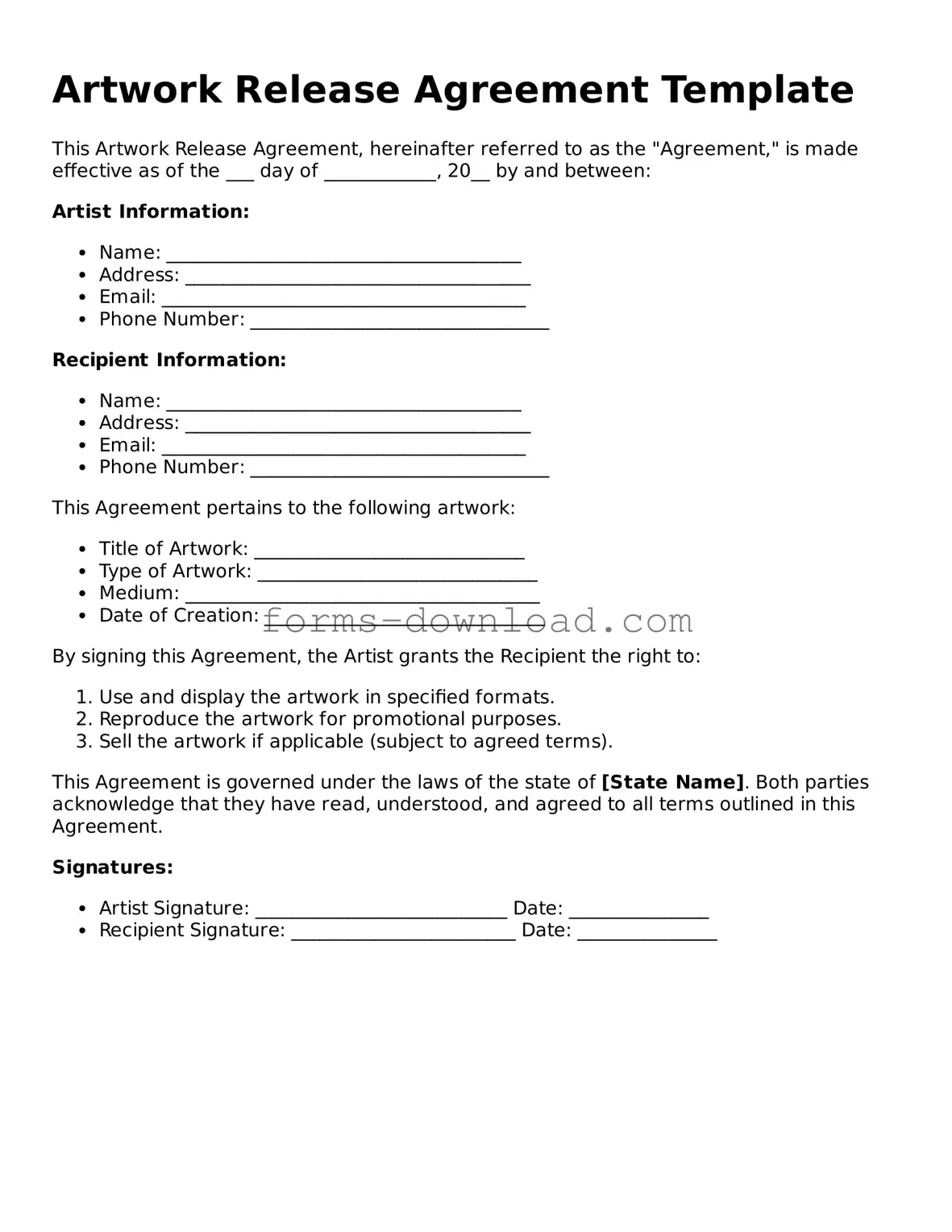Artwork Release Agreement Template
This Artwork Release Agreement, hereinafter referred to as the "Agreement," is made effective as of the ___ day of ____________, 20__ by and between:
Artist Information:
- Name: ______________________________________
- Address: _____________________________________
- Email: _______________________________________
- Phone Number: ________________________________
Recipient Information:
- Name: ______________________________________
- Address: _____________________________________
- Email: _______________________________________
- Phone Number: ________________________________
This Agreement pertains to the following artwork:
- Title of Artwork: _____________________________
- Type of Artwork: ______________________________
- Medium: ______________________________________
- Date of Creation: ______________________________
By signing this Agreement, the Artist grants the Recipient the right to:
- Use and display the artwork in specified formats.
- Reproduce the artwork for promotional purposes.
- Sell the artwork if applicable (subject to agreed terms).
This Agreement is governed under the laws of the state of [State Name]. Both parties acknowledge that they have read, understood, and agreed to all terms outlined in this Agreement.
Signatures:
- Artist Signature: ___________________________ Date: _______________
- Recipient Signature: ________________________ Date: _______________
